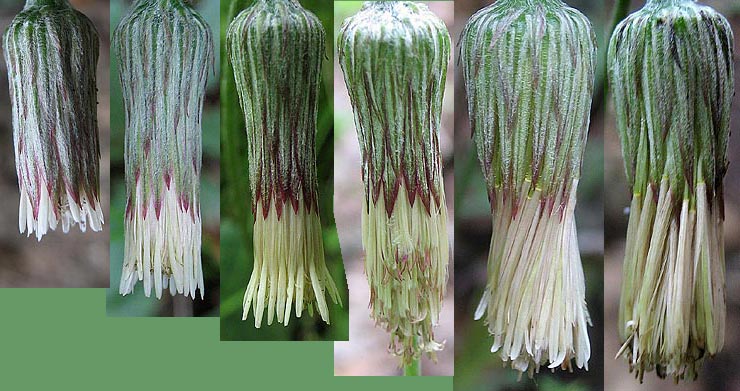
In a small canyon on the Barton Creek Greenbelt in Austin, Texas, just WSW of Zilker Park, a west-facing hillside had a population of type I Chaptalia texana in full bloom from early March to late April 2010.
Counts of all florets from 3 type I heads showed:
| count 1 | count 2: | count 3: | averages for 3 counts of type I heads |
|
|---|---|---|---|---|
| ligulate, pistillate | 27 | 26 | 22 | 25 |
| eligulate, pistillate | 54 | 62 | 57 | 58 |
| central perfect | 14 | 18 | 12 | 15 |
| total: | 95 | 106 | 91 | 97 |
The type I head is open only during the bloom and dispersal phases. After blooming the achene beaks elongate, pushing the florets and pappus out from the involucre. The follwing image illustrates a prebloom head (prior to opening) plus 5 post-bloom stages in this process. In the third from last head the central florets have lengthened more than the ligulate. In the last two heads the top of the achene beak and base of the pappus ring is exerted above the phyllaries (more clearly seen in the enlarged image). Overall these heads differ from the corresponding sets of heads for type II & type III.[Click on a head to view enlargement of that head.]
